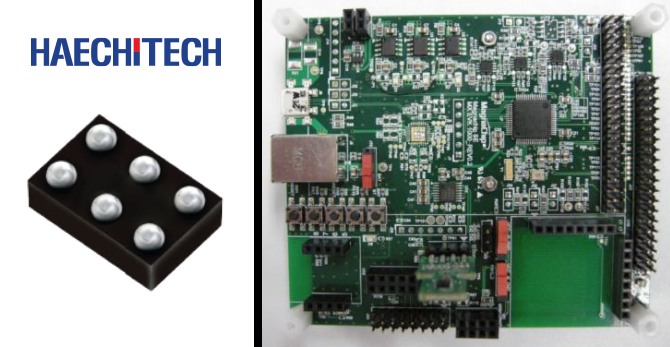Housed in a minute WLCSP-6 package (1.3 mm x 0.8 mm x 0.5 mm), Haechitech’s MXM2120 digital 3-dimensional Hall sensor is quite the offering. With programmable sensitivity, resolution, and various operating functions, the MXM2120 detects magnetic field strength with 14- and 10-bit digital output on the Z and X/Y axes respectively at a rate of 5 Hz to 1 kHz. The MXM2120 also provides user-selectable interrupt conditions and a smart low-power mode that automatically reduces power consumption (current 1 μA in power down mode, 10 μA in 5 Hz operation). With an operating temperature of -40°C to +125°C and a measurement range of ±2 mT to ±100 mT, this sensor is suitable for a wide variety of applications. It’s a shame the MXM2120 doesn’t seem to have been added to the applications page on Haechitech’s website yet, but we are sure it’s suitable for more than the water-level sensing application of their other 3D non-angular Hall sensors; the angular variety can be used in mobile, consumer, and industry applications.
In general, Haechitech’s digital Hall sensors are multi-functional digital output magnetic sensors designed with mixed signal CMOS technology, and they each have integrated Hall elements, a dynamic offset cancellation system, a programmable amplifier, a low power ADC, and arithmetic algorithm logics in a single chip. Bop, Brp, operation mode, and output data rate are programmable by I3C or I2C interface, and an on-the-shelf software suite transforms magnetic strength measurements to distance or angle between the magnet and the sensor with ease.
In addition to Hall sensors, Haechitech also produce Hall switches – one specifically for automotive applications, if that tickles your fancy – as well as sensors for temperature and humidity and a very exciting electronic compass. With such a wealth of sensors, Haechitech created the EVK1000 evaluation board, which allows a user to easily access data from any of their sensor devices. It also allows the use of several different sensor combinations for simultaneous measurement, should you decide that Haechitech sensing infrastructure serves all aspects of your application. In any case, once you have the EVK1000, you’re all set if you wish to evaluate multiple sensor component options.
You may remember that we have already written about a graphene hall sensor kit from Paragraf, but we would like to stress that we think Haechitech is not a direct competitor to Paragraf’s technology in many areas; being graphene-based and single-dimensional gives Paragraf the edge for extreme low-temperature environments. Perhaps where the applications overlap, however, Haechitech’s digital CMOS solution will be more cost effective, and particularly where 3-dimensional Hall measurement is required in a space-critical application, we think Haechitech’s product will shine brighter.
Keep designing!
(Images sourced from Haechitech)

